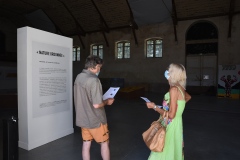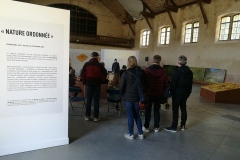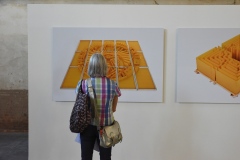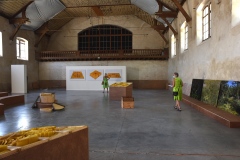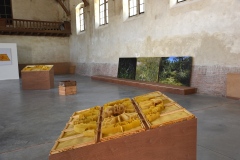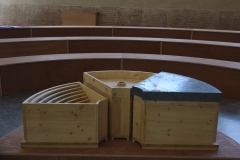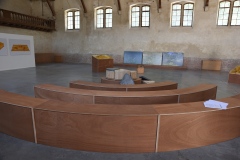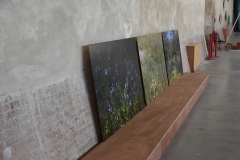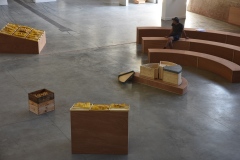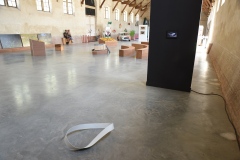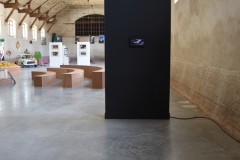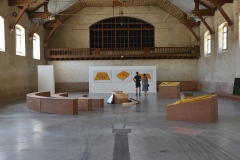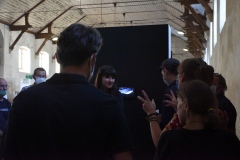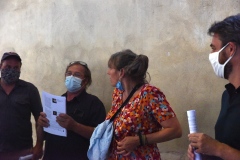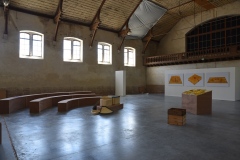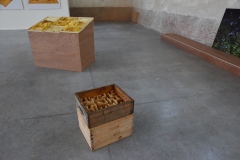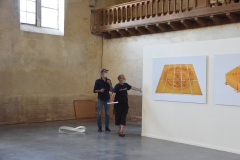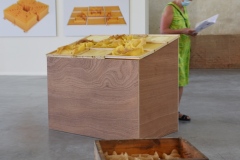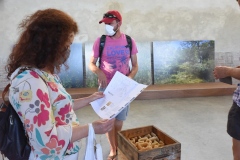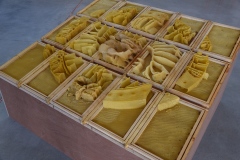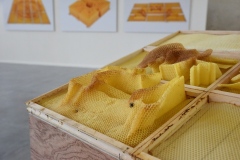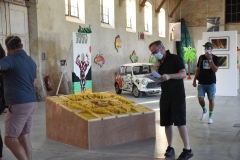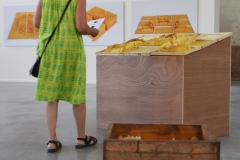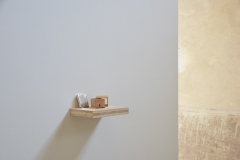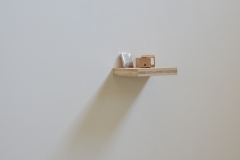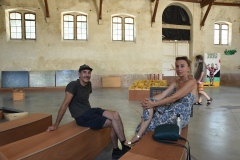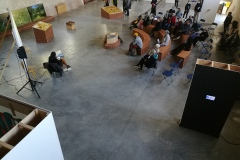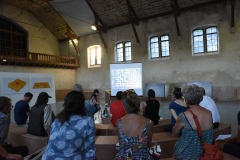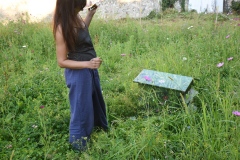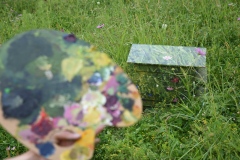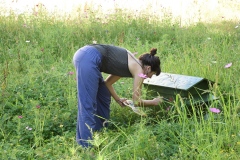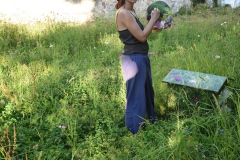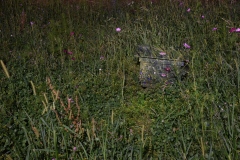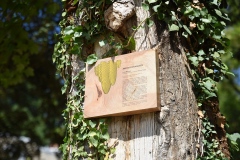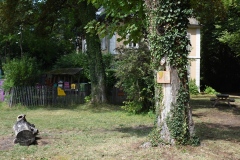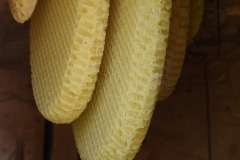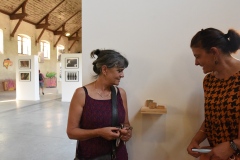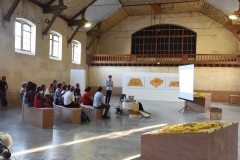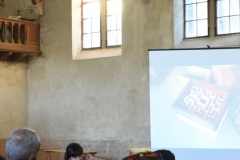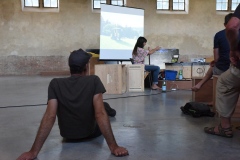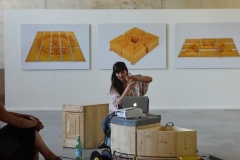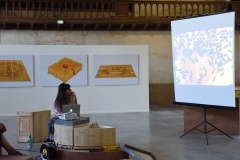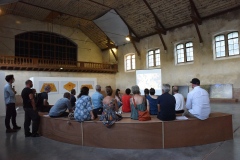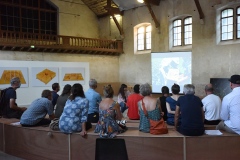NATURE ORDONNÉE AU RUCHER DU HARAS

EXPOSITION PERSONNELLE DE LUCE MOREAU – SOLO SHOW BY LUCE MOREAU
Parc du Haras, Annecy, du 7 Août au 3 Octobre 2020 – From August 7th to October 3rd 2020
Dans le cadre de la Saison 2020 du Rucher du Haras, Laboratoire apicole & artistique – Within the frame of the Season 2020 at Rucher du Haras, Beekeeping & Artistic Laboratory
Vernissage : jeudi 6 août 2020 à partir de 18h, le Manège, Parc du Haras, Annecy – Opening: Thursday August 6th starting at 6pm, at le Manège, Parc du Haras, Annecy
L’exposition présente le corpus d’œuvres Nature ordonnée, travail développé ces cinq dernières années par l’artiste Luce Moreau autour des notions de résilience, d’habitats utopiques et de relations interespèces. Par opposition à l’incontestable « ordre naturel » des choses, « nature ordonnée » interroge la relation entre la société humaine et les organisations animales ; l’ascendance de l’une sur les autres, mais aussi l’interpénétration de leurs systèmes et comportements, dont le dessein commun est la survie.
Modules chimériques, conquête spatiale, Palais Sociétaire, entomologie, architecture utopique, géométrie, système politique constituent diverses approches du sujet par l’artiste. La vision d’un futur proche où l’abeille disparaissante serait à protéger, à faire perdurer, invite à la création de fictions d’anticipation sous la forme d’installations mêlant mimétisme, camouflage, artefacts et résilience.
Cette exposition est produite par le Rucher du Haras – association Jardins Fabriques avec le soutien du Département de Haute-Savoie dans le cadre de sa politique Espaces Naturels Sensibles, de la Commune nouvelle d’Annecy, et d’Annecy Paysages – Bonlieu scène nationale, l’ESAAA
The exhibition presents the body of work Nature ordonnée, developed over the past five years by the artist Luce Moreau around the concepts of resilience, utopian habitats, and interspecies relationships. In contrast to the indisputable “natural order” of things, “Nature ordonnée” questions the relationship between human society and animal organizations; the ascendancy of one over the other, but also the interpenetration of their systems and behaviors, whose common goal is survival.
Chimeric modules, space conquest, the Societary Palace, entomology, utopian architecture, geometry, and political systems are among the artist’s various approaches to the subject. The vision of a near future in which the disappearing bee must be protected and preserved invites the creation of speculative fiction in the form of installations combining mimicry, camouflage, artifacts, and resilience.
This exhibition is produced by Rucher du Haras – association Jardins Fabriques with the support of Département de Haute-Savoie in the frame of the programme Espaces Naturels Sensibles, Commune nouvelle d’Annecy, and Annecy Paysages – Bonlieu scène nationale, ESAAA
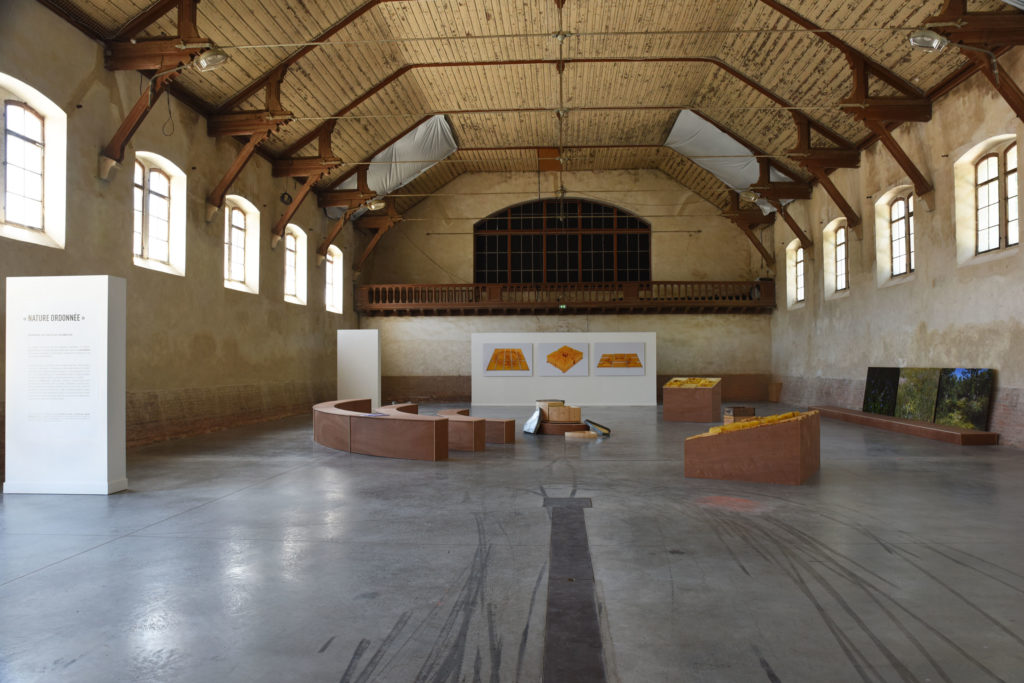
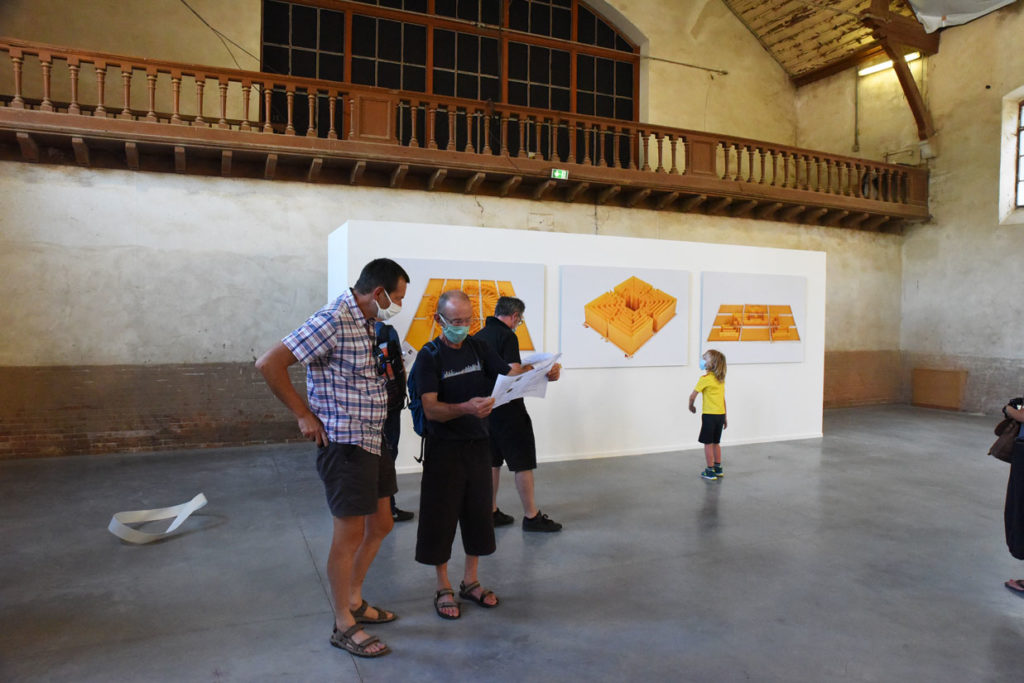
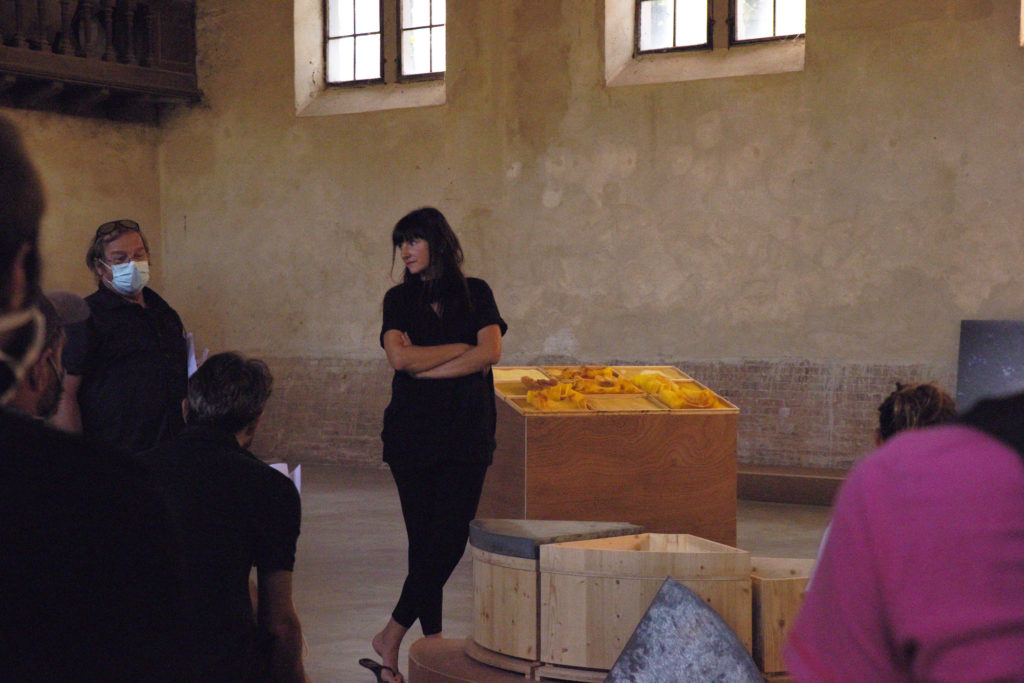
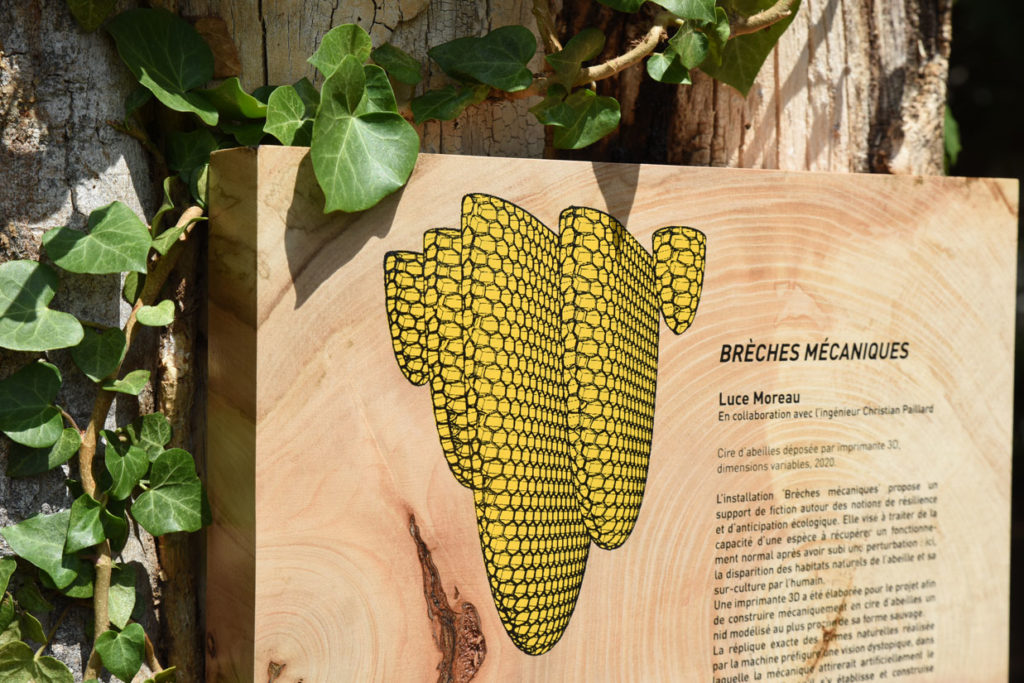
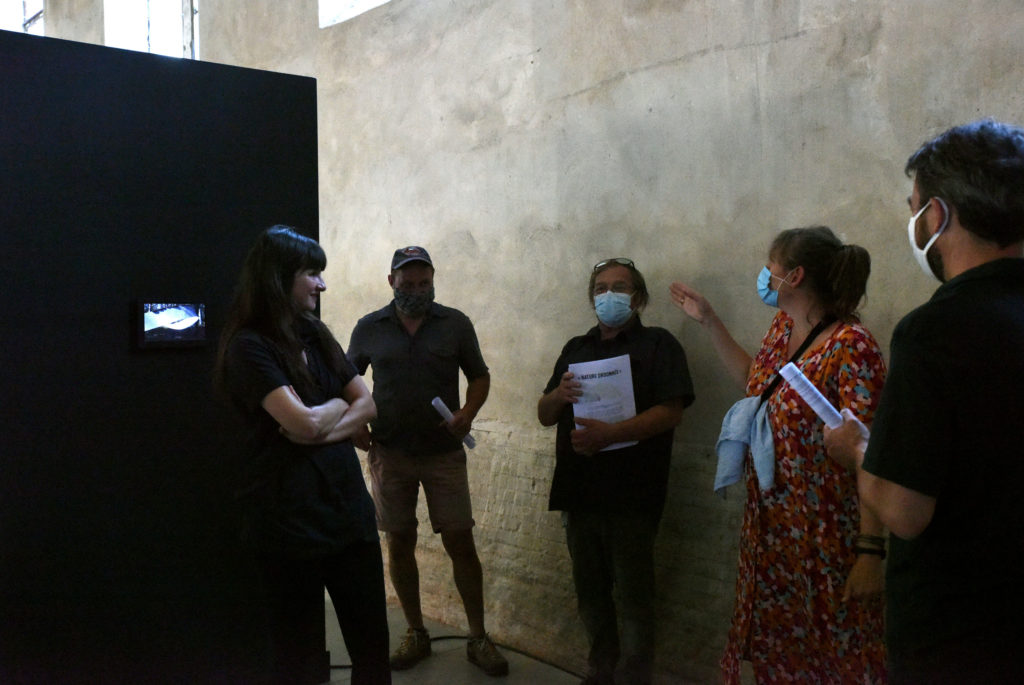
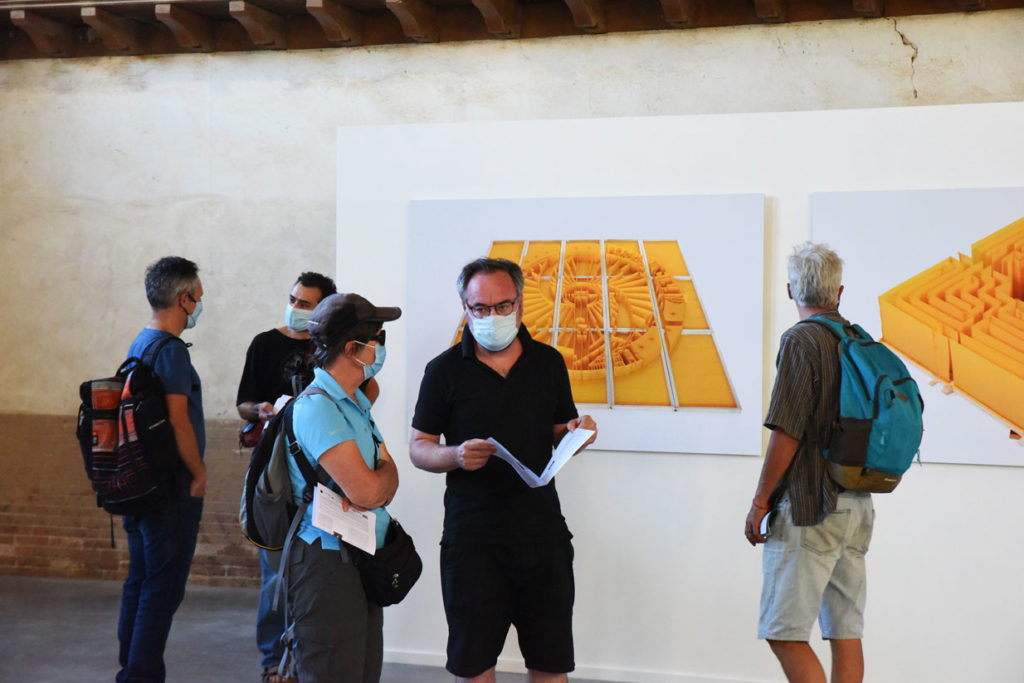
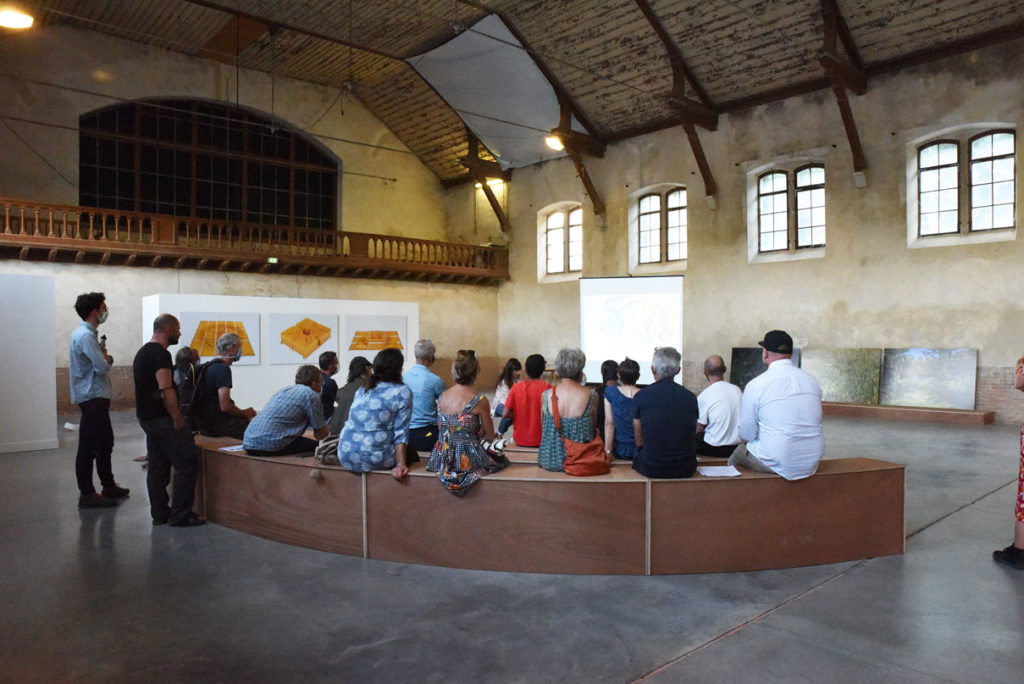
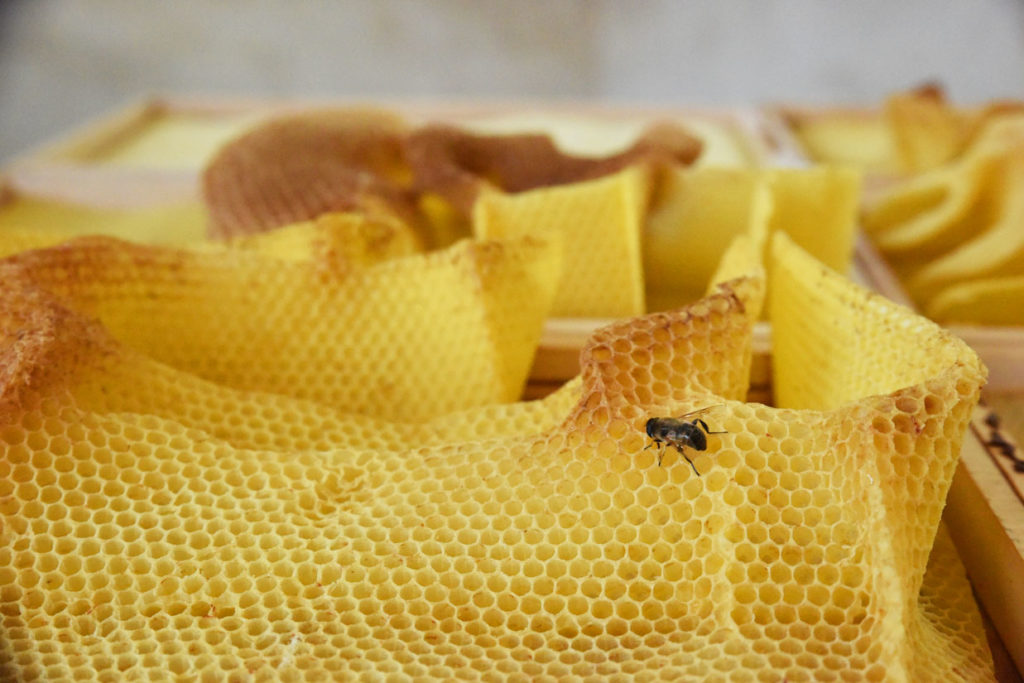
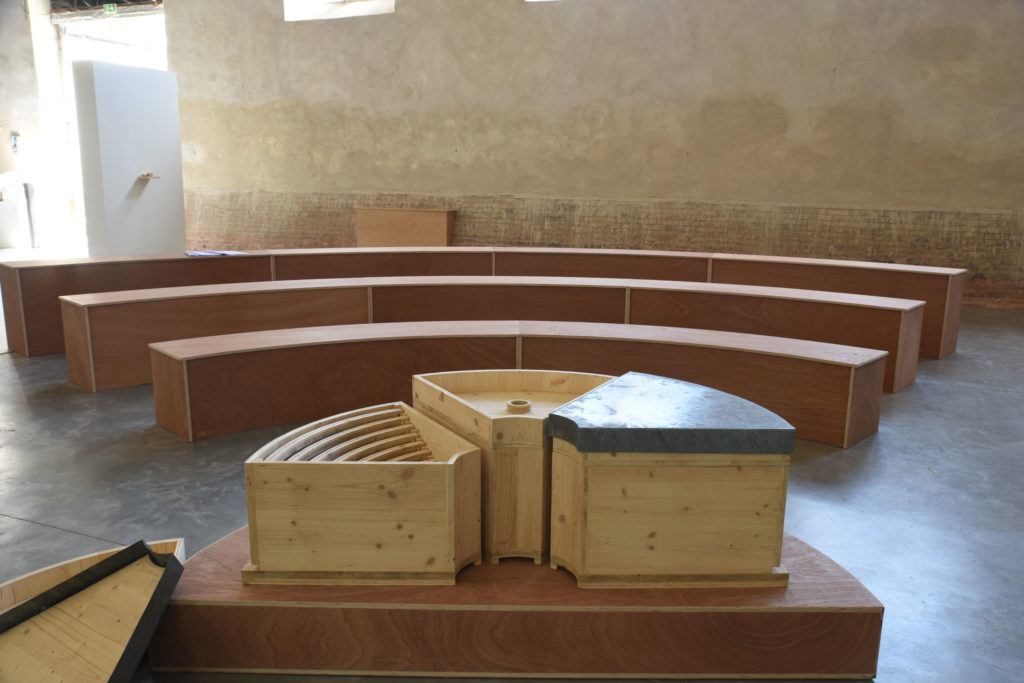

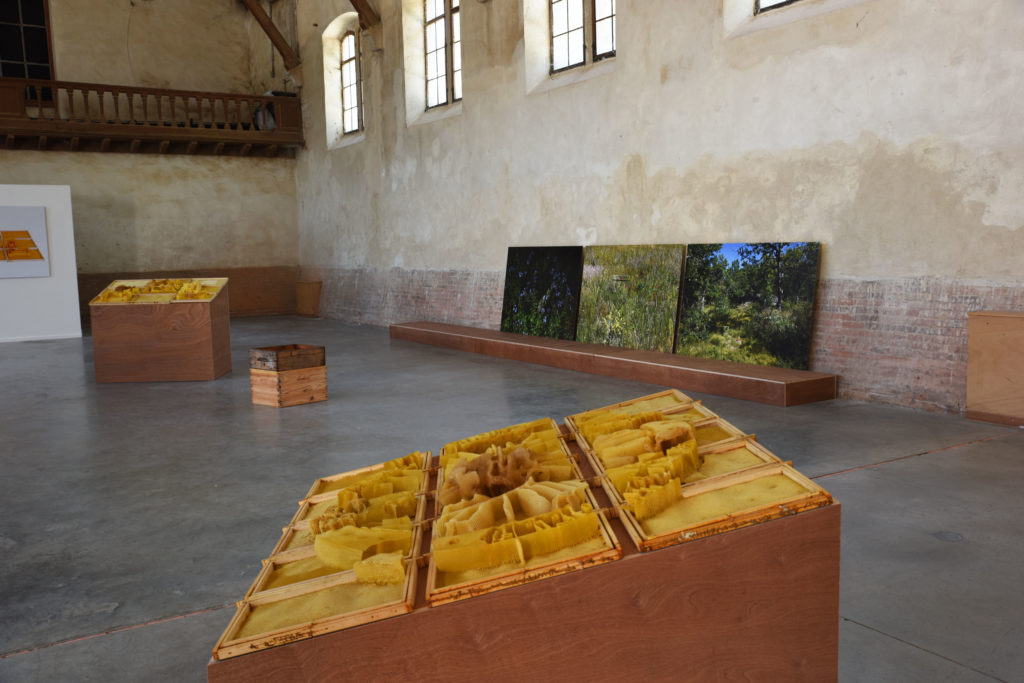
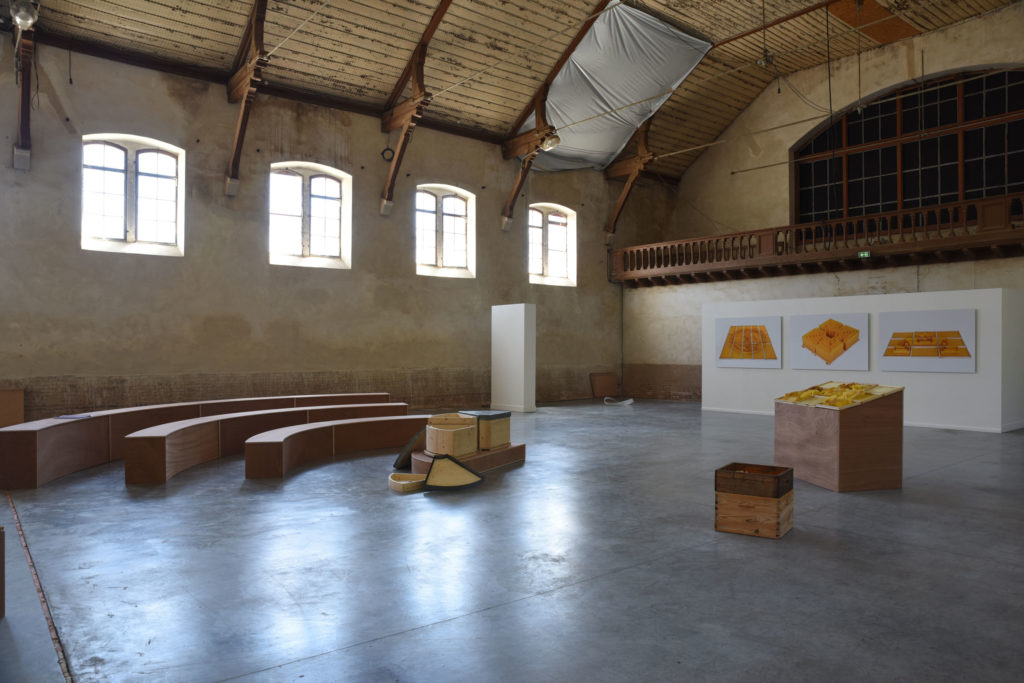
A PROPOS DE L’ARTISTE – ABOUT THE ARTIST
Luce Moreau est artiste plasticienne, photographe, vidéaste et commissaire. Ses récentes préoccupations artistiques sortent du champ de la lumière et du spatial pour entamer un projet à long terme faisant se côtoyer l’observation du vivant, les relations inter-espèces, l’utopie communautaire et les nouveaux imaginaires dans un paradigme mondial changeant. Demeurent l’observation sensible de phénomènes naturels, ainsi que l’aspect expérimental de son approche. Différents temps de résidences artistiques en situations exceptionnelles ont donné lieu à des réalisations très spécifiques, permettant à l’artiste d’approfondir ses questionnements plastiques tant par empirisme que par la réflexion et l’observation.
Luce Moreau is a visual artist, photographer, videographer, and curator. Her recent artistic interests have moved beyond the fields of light and space to embark on a long-term project that brings together the observation of living beings, inter-species relationships, communal utopia, and new imaginaries in a changing global paradigm. What remains is the sensitive observation of natural phenomena and the experimental aspect of her approach. Various artistic residencies in exceptional contexts have given rise to very specific creations, allowing the artist to deepen her artistic questioning through both empiricism and reflection and observation.
AUTOUR DE L’EXPOSITION – AROUND THE SHOW
Jeudi 6 août 2020, à partir de 18h :
Inauguration & vernissage de l’exposition personnelle NATURE ORDONNÉE de Luce Moreau, artiste invitée dans le Manège du Haras
Vendredi 7 août 2020, de 18h à 20h:
Inauguration de l’œuvre BRÈCHES MÉCANIQUES de Luce Moreau, artiste invitée
Dans la continuité de sa démarche de programmation et de production d’œuvres mêlant art et apiculture, le Rucher du Haras propose à Luce Moreau, artiste plasticienne, d’ installer son œuvre Brèches mécaniques dans la cavité d’un arbre au sein du Parc du Haras à Annecy … en attente d’un essaimage prochain !
RENCONTRE AU JARDIN
De la ruche à l’espace refuge naturel : quel habitat pour les abeilles sur nos territoires et dans nos villes ?
Les insectes pollinisateurs s’adaptent à leur espace et environnement. Ils inventent et construisent une diversité de forme de niches, refuges ou habitats invisibles si on ne les considère pas de plus prêt ! Cette rencontre propose d’aborder ce thème de l’habitat des abeilles sur nos territoires urbains et ruraux avec des regards pluriels à la fois scientifique, artistique et architecturale afin d’ouvrir les champs de perception et de compréhension de notre monde complexe !
Avec Luce Moreau, artiste plasticienne, autour de son travail de recherche autour de la thématique Nature Ordonnée ; Colin Van Reeth, écologue fin spécialiste des abeilles sauvages et Pierre Janin, architecte Fabriques Architecture Paysage et philosophe.
Cette rencontre est réalisée grâce au soutien de la direction Paysages et biodiversité de la commune nouvelle d’Annecy et du programme Bee Aware.
Samedi 8 août, en après-midi de 14h à 17h :
OEUVRE-PERFORMANCE CAMOUFLÉES de Luce Moreau, artiste invitée dans le Champs du Grand Pierre
Fiction d’anticipation mettant en scène l’artiste peignant des ruches abandonnées en trompe-l’oeil ; elle cherche de cette façon à les faire «disparaître» en urgence, afin que pour quelques jours les boîtes se fondent dans le paysage et deviennent pour les abeilles autant de refuges invisibles à l’oeil humain. Nous pensons survie, prédation mais également à la poétique du motif floral et au renouveau de la nature. Cette action crée une anamorphose dans l’espace et dans le temps ; depuis le point de vue photographique, et pendant quelques jours seulement, le visiteur pourra voir la ruche « camouflée ».
Thursday, August 6th, 2020, starting at 6 p.m.:
Opening and preview of the solo exhibition NATURE ORDONNÉE by Luce Moreau, guest artist at the Manège du Haras
Friday, August 7th, 2020, from 6 p.m. to 8 p.m.:
Opening of the work BRÈCHES MÉCANIQUES by Luce Moreau, guest artist
In line with its approach to programming and producing works that combine art and beekeeping, the Rucher du Haras has invited visual artist Luce Moreau to install her work Brèches mécaniques in the hollow of a tree in the Parc du Haras in Annecy… . awaiting the arrival of a swarm!
MEETING IN THE GARDEN
From the hive to the natural refuge: what kind of habitat for bees in our regions and cities?
Pollinating insects adapt to their space and environment. They invent and build a variety of niches, refuges, and habitats that are invisible unless you look closely! This meeting aims to address the theme of bee habitats in our urban and rural areas from a variety of perspectives, including scientific, artistic, and architectural, in order to broaden our perception and understanding of our complex world!
With Luce Moreau, visual artist, discussing her research on the theme of Ordered Nature; Colin Van Reeth, ecologist and specialist in wild bees; and Pierre Janin, architect at Fabriques Architecture Paysage and philosopher.
This event is made possible thanks to the support of the Landscapes and Biodiversity Department of the new municipality of Annecy and the Bee Aware program.
Saturday, August 8th, in the afternoon from 2 p.m. to 5 p.m.:
PERFORMANCE CAMOUFLÉES by Luce Moreau, guest artist in the Champs du Grand Pierre
A work of speculative fiction featuring the artist painting abandoned beehives in trompe-l’oeil style; in this way, she seeks to make them “disappear” urgently, so that for a few days the boxes blend into the landscape and become invisible refuges for the bees. We think of survival, predation, but also the poetry of the floral motif and the renewal of nature. This action creates an anamorphosis in space and time; from a photographic point of view, and for a few days only, visitors will be able to see the “camouflaged” hive.
INFOS PRATIQUES & HORRAIRES – INFOS & OPENING HOURS
Parc du Haras, Le Manège
11 Rue Guillaume Fichet, 74000 Annecy
Exposition tout public – Exhibition open to all ages
Ouverte du jeudi 6 août au samedi 3 octobre 2020, du mercredi au dimanche, de 13h à 19h, accès gratuit. – Open from Thursday, August 6th to Saturday, October 3rd, 2020, Wednesday through Sunday, from 1 p.m. to 7 p.m., free admission.
DOCUMENTATION
Les Palais
Série de sculptures et de photographies initiée en 2015
Les Palais
Series of sculptures and photographs started in 2015
Le projet « Les Palais » détourne les plaques de cire gaufrée dont se servent les apiculteurs pour assister les abeilles dans l’échafaudage de leurs alvéoles, bases de la ruche, recueil du miel et des larves. Il soumet à des colonies d’abeilles et à leur ingénierie les plans de complexes architecturaux humanistes, dédiés à l’Humanité, dans une utopie de société solidaire et progressiste : le Phalanstère, Palais Sociétaire imaginé par Charles Fourier au XIXème siècle, la Station Orbitale dessinée début XXème par l’ingénieur Herman Potočnik dit Noordung, qui assurerait dans l’espace un habitat ‘de secours’ dans lequel serait recréée la gravité terrestre, sans oublier la structure du piège mythique du Labyrinthe de Dédale.
The project “Les Palais” repurposes the embossed wax plates used by beekeepers to assist bees in building their honeycombs, the foundations of the hive, where honey and larvae are stored. It submits to bee colonies and their engineering the plans for humanistic architectural complexes, dedicated to humanity, in a utopia of a united and progressive society: the Phalanstère, a Societary Palace imagined by Charles Fourier in the 19th century, the Orbital Station designed in the early 20th century by engineer Herman Potočnik, known as Noordung, which would provide a “emergency” habitat in space in which Earth’s gravity would be recreated, not to mention the structure of the mythical trap of Daedalus’ Labyrinth.
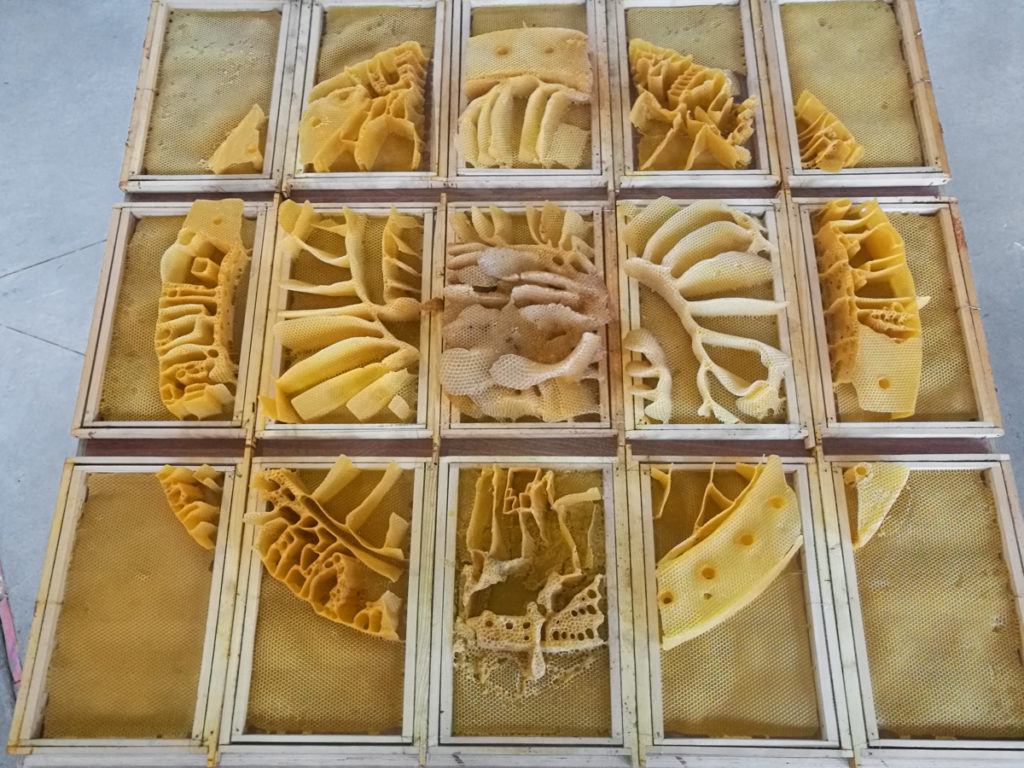
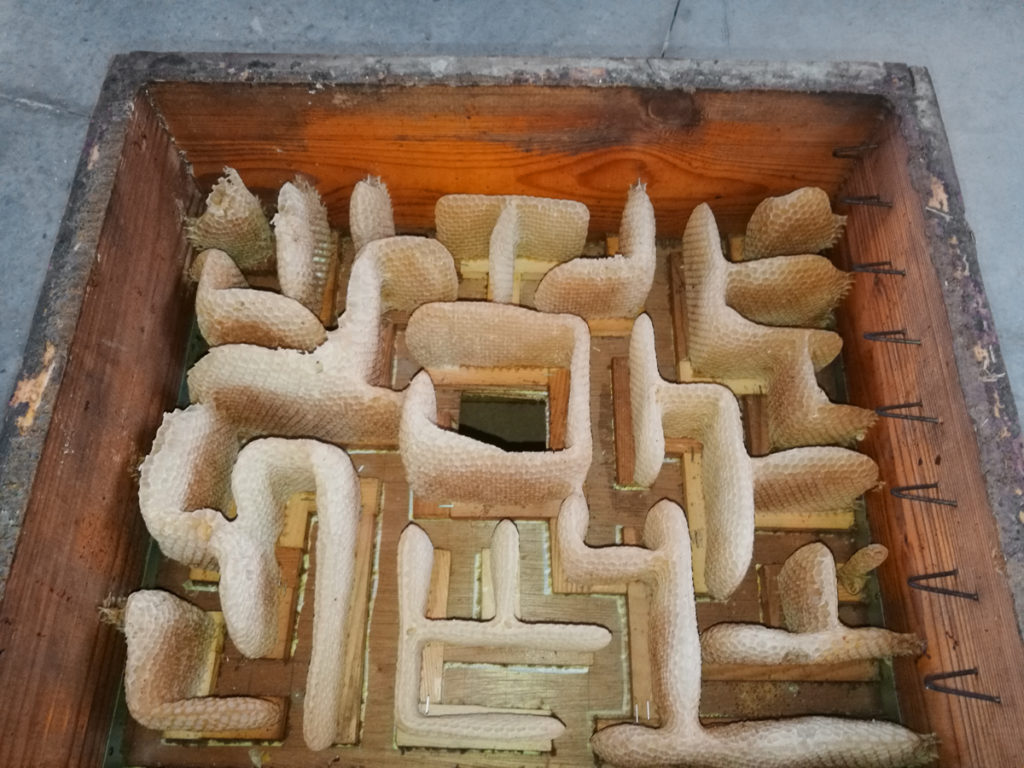
L’Espace (après)
Cire gaufrée, cire naturelle, bois, fil en inox, série d’installations Les Palais, 2017.
Installation composée de quinze cadres pour ruches slovènes de type «AŽ» bâtis par les abeilles en juillet 2017, rucher de l’apiculteur Alain Klein, dans
la vallée du Lot (Fr).
Embossed wax, natural wax, wood, stainless steel wire, Les Palais installation series, 2017.
Installation composed of fifteen frames for Slovenian “AŽ” type beehives built by bees in July 2017, apiary of beekeeper Alain Klein, in the Lot valley (Fr).
Le Mythe (après)
Cire gaufrée, cire naturelle, bois, fil en inox, série d’installations Les Palais, 2017.
Installation composée d’une hausse de ruche Dadant bâtie par les abeilles en juin 2015, rucher des apiculteurs Christine et Hervé, à Pertuis (Fr).
Embossed wax, natural wax, wood, stainless steel wire, Les Palais installation series, 2017.
Installation composed of a Dadant hive top, built by bees in June 2015, apiary of beekeepers Christine and Hervé, in Pertuis (Fr).
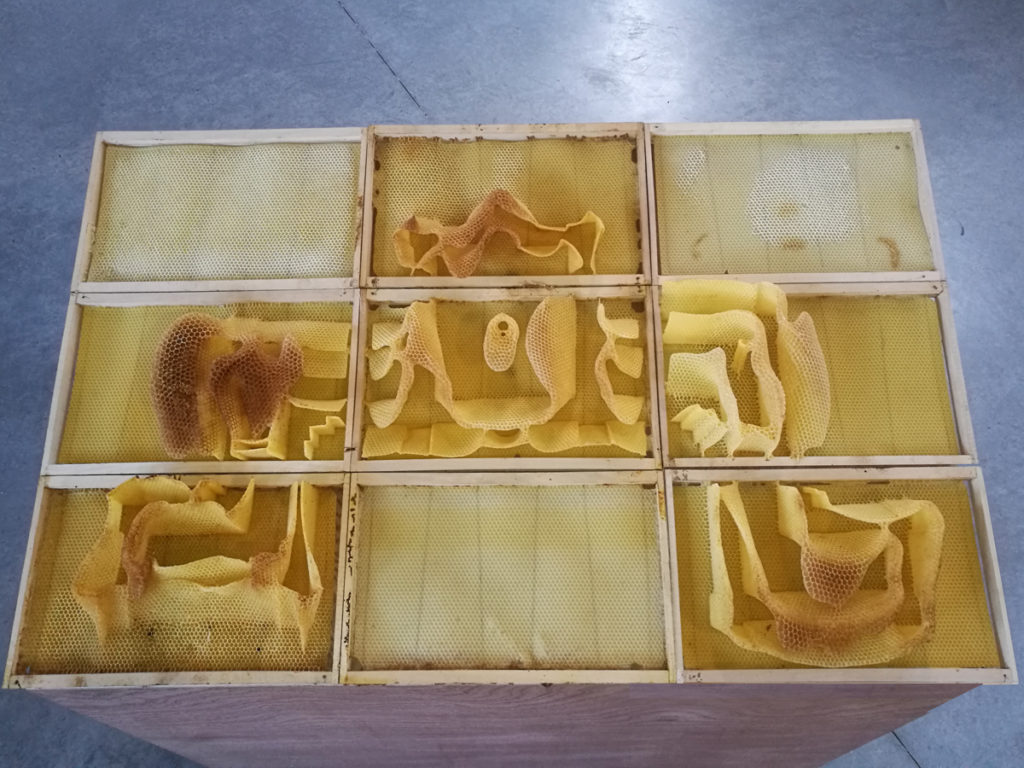
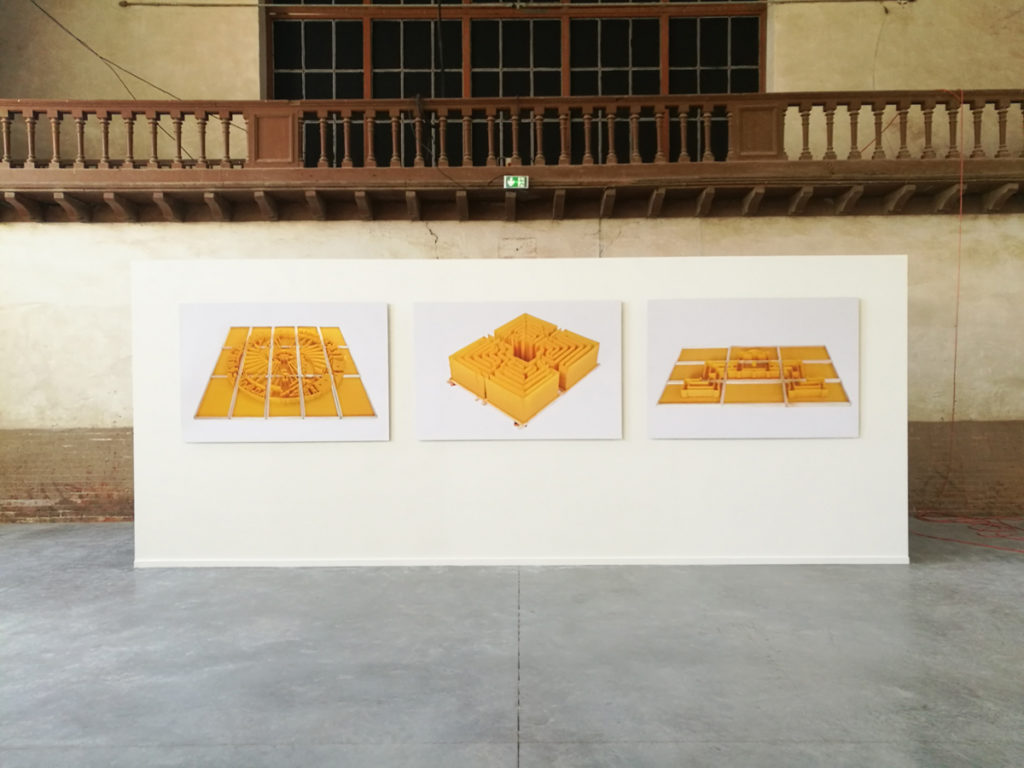
L’Avenir (après)
Cire gaufrée, Cire naturelle, bois, fil en inox, série d’installations Les Palais, 2017.
Installation composée d’une hausse de ruche Dadant bâtie par les abeilles en juin 2015, rucher des apiculteurs Christine et Hervé, à Pertuis (Fr).
Embossed wax, natural wax, wood, stainless steel wire, Les Palais installation series, 2017.
Installation composed of a Dadant hive top, built by bees in June 2015, apiary of beekeepers Christine and Hervé, in Pertuis (Fr).
L’Avenir (avant), Le Mythe (avant), L’Espace (avant) Photographies de la série Les Palais, impressions numériques contrecollées sur dibond 164 cm x 110 cm, 2015 – 2017
Photographs from the series Les Palais, digital prints mounted on Dibond, 164 cm x 110 cm, 2015–2017
Camouflées
Fiction d’anticipation mettant en scène des ruches abandonnées qui sont peintes en trompe-l’oeil de façon à «disparaître», à se fondre dans le paysage convoquant les notions de résilience , de camouflage, de survie. L’abeille doit-elle se cacher des humains pour survivre? L’action par l’artiste de peindre les ruches est également une performance, une anamorphose dans l’espace et dans le temps.
Camouflées
A work of speculative fiction featuring abandoned beehives painted in trompe-l’oeil style so that they “disappear,” blending into the landscape and evoking notions of resilience, camouflage, and survival. Must bees hide from humans in order to survive? The artist’s act of painting the hives is also a performance, an anamorphosis in space and time.
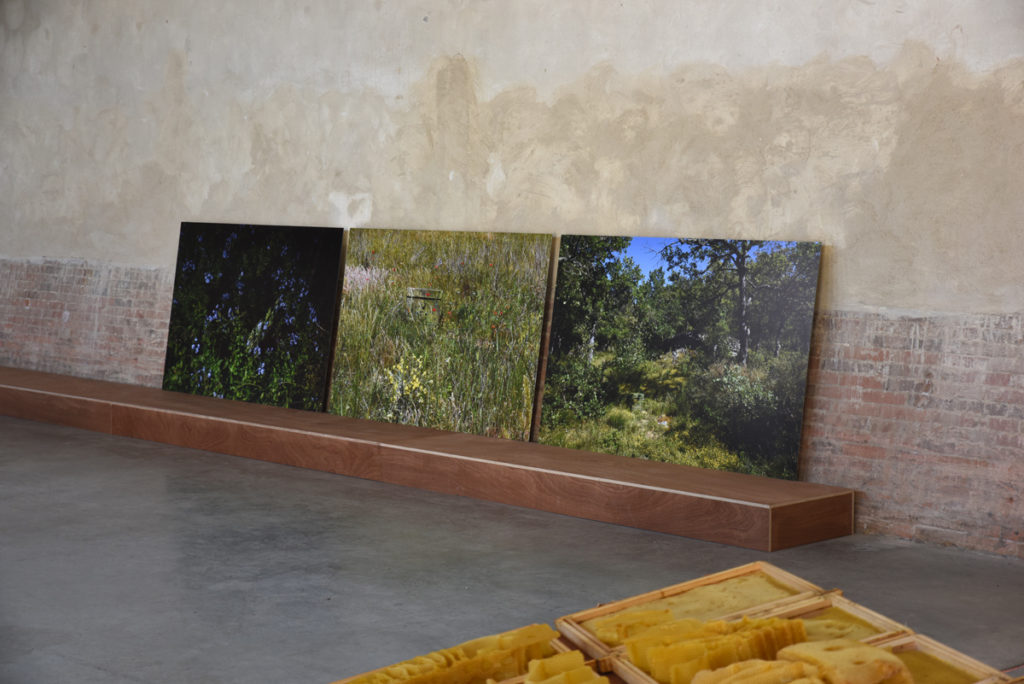
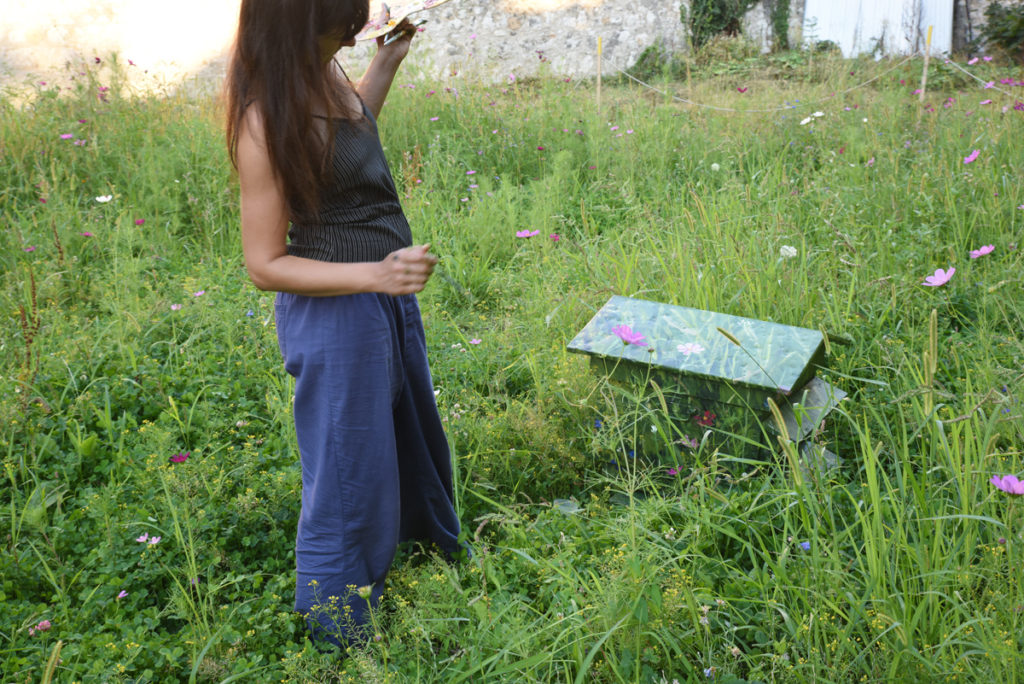
Camouflées (Prairie, Bories, Plumbago)
Tirages numériques couleur contrecollés sur Dibond, 2016-2020, 110 x 87 cm
Digital color prints mounted on Dibond, 2016-2020, 110 x 87 cm
Camouflées (Grand Pierre)
Performance et peinture en public d’une ruche camouflée dans le Champ du Grand Pierre, au Parc du Haras, Annecy – le samedi 8 août 2020.
Performance and painting of a camouflaged beehive in the Champ du Grand Pierre, Parc du Haras, Annecy – Saturday, August 8, 2020.
Procession
Le projet « La Procession » voit la timide rencontre du monde des idées, de l’abstraction avec les sous-bois d’une forêt de pins, de ses habitantes processionnaires et de leur instinct collectif exceptionnel. L’expérience menée dans les pas de l’entomologie d’antan propose d’observer une première collision entre l’idée d’infini et les processus de cycles, de ‘boucles’ dans la nature ; une version bêta réalisée alors que l’alerte à ces chenilles ‘indésirables’ les promet à une mort certaine, et initiant par là une réflexion autour du statut de ‘nuisible’ apposée par les humains aux ‘espèces non-humains’.
Procession
The project “Procession” organizes the timid encounter between the world of ideas and abstraction with the undergrowth of a pine forest, its processionary inhabitants, and their exceptional collective instinct. This experiment, conducted in the footsteps of entomology of yesteryear, offers an observation of the first collision between the idea of infinity and the processes of cycles, or “loops,” in nature. A beta version created at a time when the alert about these “undesirable” caterpillars promises them certain death, thereby initiating a reflection on the status of ‘pest’ assigned by humans to “non-human species.”
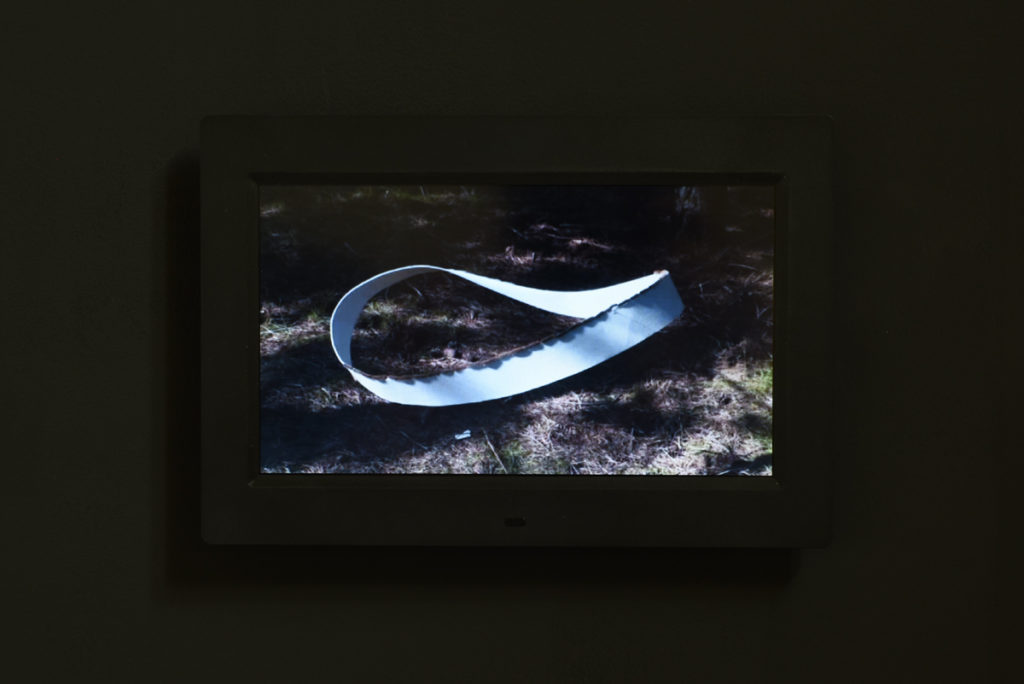
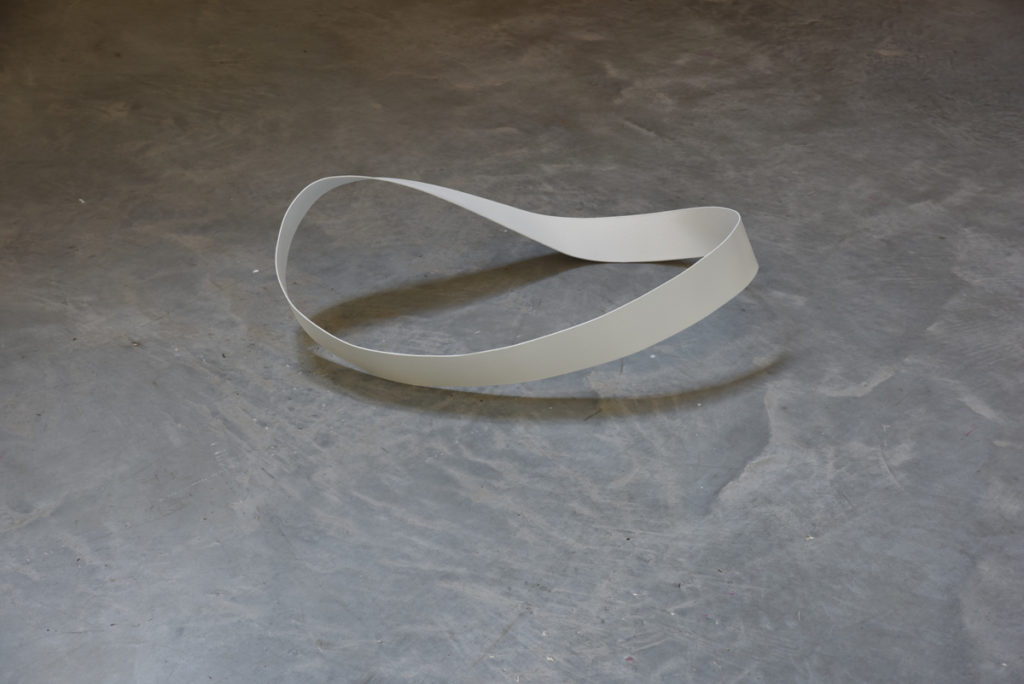
La Procession (making of)
Version «beta» du projet de vidéo, 2017
Beta version of the video project, 2017
La Procession (prototype)
Ruban de Möbius, acier, 2017
Möbius strip, steel, 2017
Modulor
Ruches individuelles pour un habitat collectif ; vision anthropocentrée de l’habitat, du confort, appliquée dans l’absurdité au mode de fonctionnement des abeilles. Le projet de plusieurs milliers de petites ruches individuelles assemblées constitueront le volume final d’une ruche «classique» abritant usuellement plus de 50 000 abeilles.
Modulor
Individual hives for collective living; an anthropocentric vision of habitat and comfort, applied absurdly to the way bees live. The project involves several thousand small individual hives assembled to form the final volume of a “classic” hive, which usually houses more than 50,000 bees.
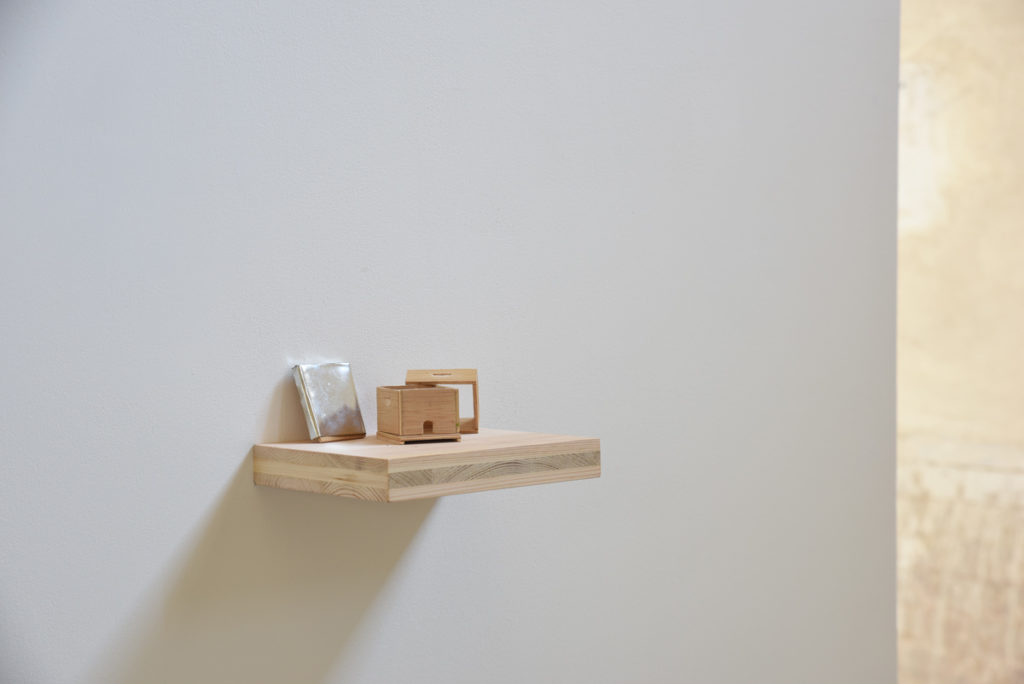
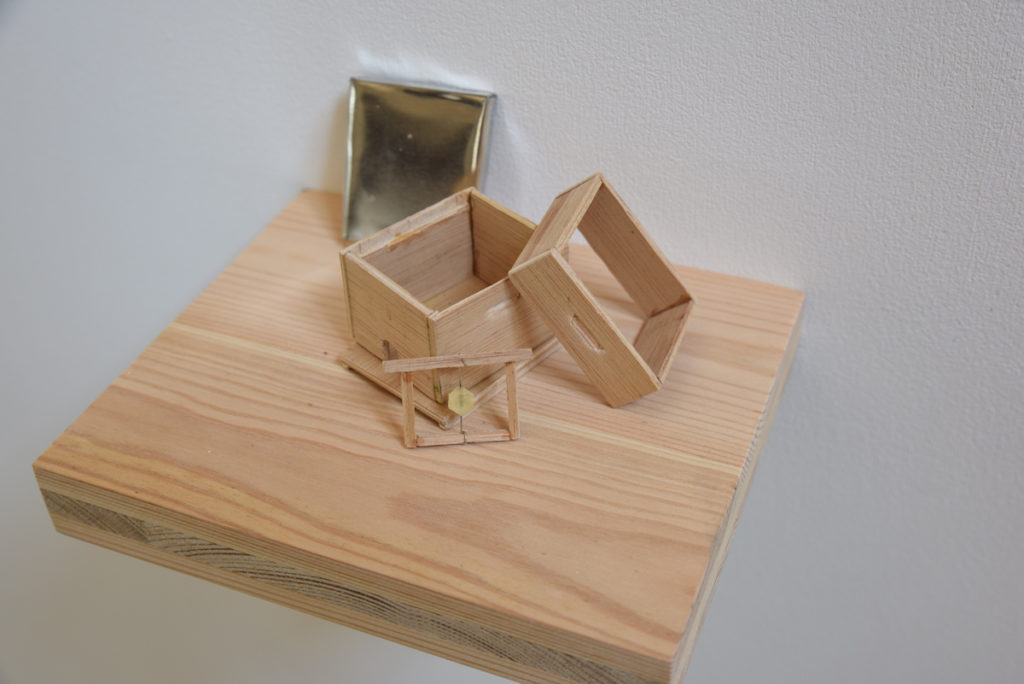
Modulor
Prototype d’un élément Bois, fil d’inox, cire d’abeille, 2019
Modulor
Prototype of an element Wood, stainless steel wire, beeswax, 2019
Hémicycle
Hémicycle est un projet de ruches modifiées composé de trois ruches incurvées qui une fois réunies forment un demi-cercle ; les douze rayons de cires, incurvés également, sont disposés en gradins. Cet Hémicycle, ou Parlement, a été construit avec les exactes mêmes contraintes qu’une ruche ordinaire : bois massif, crémaillères, rayons et cadres, entrée et piste d’atérissage des abeilles, récolte du miel. L’organisation des rayons et la division de cet hémicycle en trois parties propose un modèle d’organisation politique et d’échanges d’idées propre à l’espèce humaine : Parlement européen, tribunal et amphithéâtre sont autant de lieux dans lesquels le sort du monde en son entier est régulièrement discuté, décidé. Cette structure « doit, théoriquement, être destinée à favoriser les consensus entre les groupes politiques surtout lorsqu’il s’agit d’un système démocratique où le multipartisme domine. » Les colonies d’abeilles, dont le fonctionnement est inscrit dans leurs gènes depuis des millions d’années, seront invitées à investir cette architecture typique (quoiqu’adaptée) pendant plusieurs années.
Hémicycle
Hémicycle is a project involving modified beehives consisting of three curved hives that, when joined together, form a semicircle; the twelve wax combs, which are also curved, are arranged in tiers. This Hemicycle, or Parliament, was built with exactly the same constraints as an ordinary hive: solid wood, racks, combs and frames, entrance and landing strip for bees, honey harvest. The organization of the combs and the division of this hemicycle into three parts offers a model of political organization and exchange of ideas specific to the human species: the European Parliament, the court, and the amphitheater are all places where the fate of the entire world is regularly discussed and decided. This structure “should, in theory, be designed to promote consensus among political groups, especially in a democratic system dominated by a multi-party system.” Bee colonies, whose functioning has been encoded in their genes for millions of years, will be invited to inhabit this typical (albeit adapted) architecture for several years.
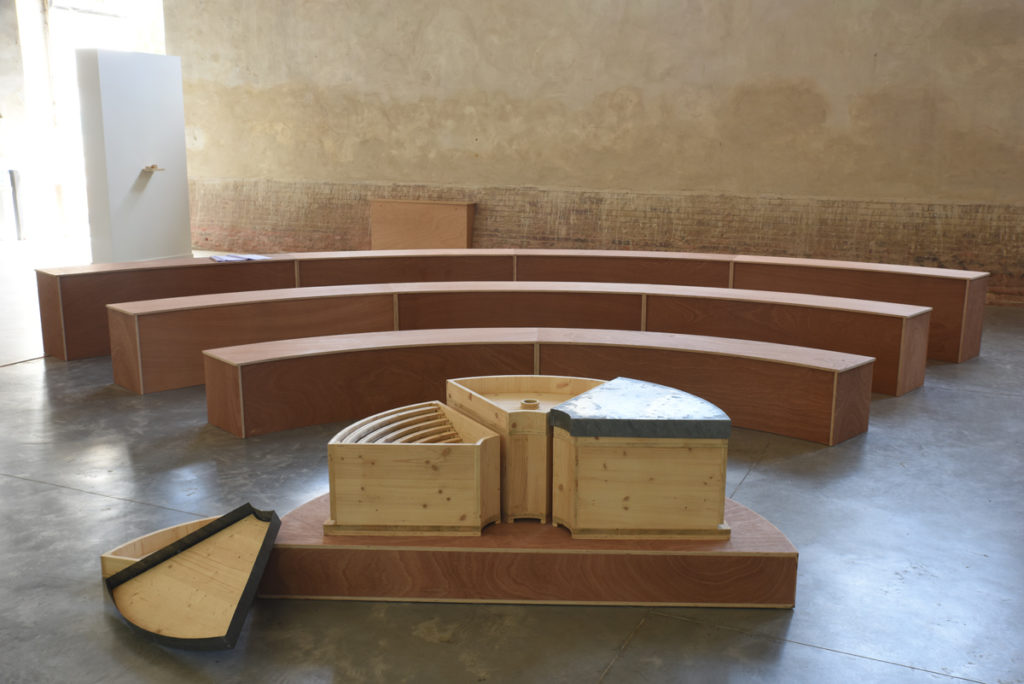

Hémicycle
Bois, cire gaufrée, fil en inox, 2016. Ruches destinées à intégrer un rucher afin d’accueillir sur plusieurs années trois colonies d’abeilles.
Hémicycle
Wood, embossed wax, stainless steel wire, 2016. Beehives designed to be integrated into an apiary to house three bee colonies over several years.
Brèches mécaniques
L’installation ‘Brèches mécaniques’ propose un support de fiction autour des notions de résilience et d’anticipation écologique. Elle vise à traiter de la capacité d’une espèce à récupérer un fonctionnement normal après avoir subi une perturbation : ici, la disparition des habitats naturels de l’abeille et sa sur-culture par l’humain. Une imprimante 3D a été élaborée pour le projet afin de construire mécaniquement en cire d’abeilles un nid modélisé au plus proche de sa forme sauvage. La réplique exacte des formes naturelles réalisée par la machine préfigure une vision dystopique, dans laquelle la mécanique attirerait artificiellement le pollinisateur afin qu’il s’y établisse et construise instinctivement l’habitat de sa colonie. L’artiste Luce Moreau a installé ces constructions dans un érable du Parc du Haras afin d’observer leur appropriation, ou non, par un essaim sauvage.
Brèches mécaniques
The installation “Brèches mécaniques” (Mechanical Breaches) offers a fictional take on the concepts of resilience and ecological anticipation. It aims to address the ability of a species to recover normal functioning after undergoing a disturbance: in this case, the disappearance of the bee’s natural habitats and its overharvesting by humans. A 3D printer was developed for the project in order to mechanically construct a nest out of beeswax that closely resembles its wild counterpart. The machine’s exact replica of natural forms foreshadows a dystopian vision in which mechanics would artificially attract pollinators to settle there and instinctively build their colony’s habitat. Artist Luce Moreau installed these constructions in a maple tree in Parc du Haras to observe whether or not they would be appropriated by a wild swarm.

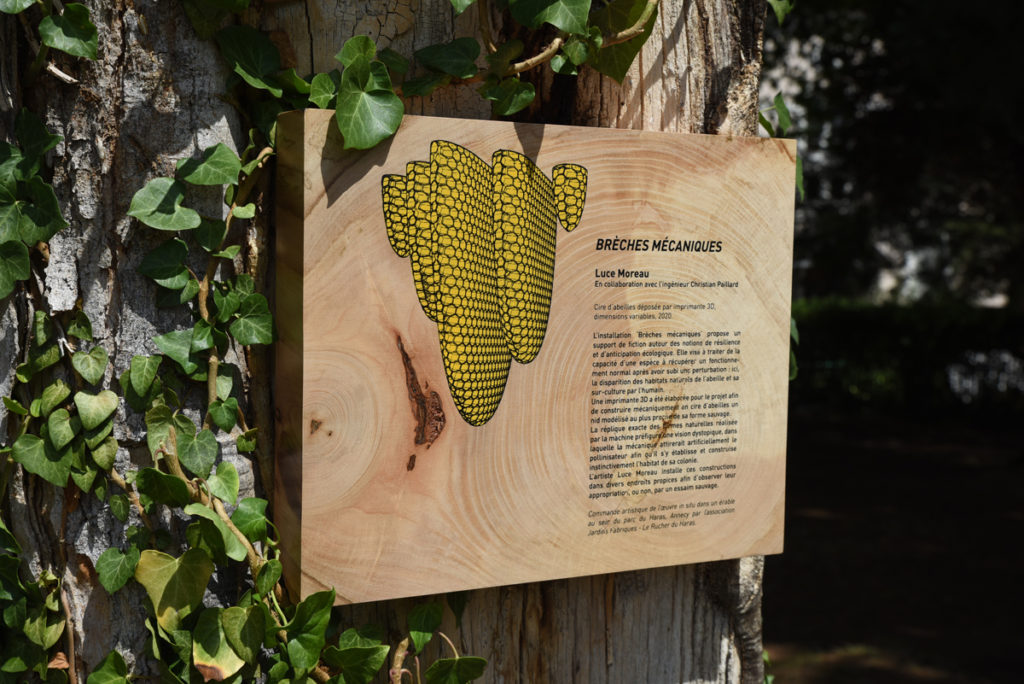
Brèches mécanique
Brèches mécaniques au Parc du Haras Cire d’abeilles déposée par imprimante 3D, dimensions variables, 2020.
Élaboration de l’imprimante 3D : Christian Paillard – Modélisation : Danael Valbert
L’installation Brèches Mécaniques dans le parc du Haras d’Annecy (2020) est produite par l’association Jardins Fabriques – Le Rucher du Haras avec le soutien du service Paysages et biodiversité et du service Paysages et biodiversité et Culture et animation de la Ville d’Annecy – Commune nouvelle, du festival Annecy Paysages – Bonlieu Scène nationale Annecy et de l’ESAAA ;
Brèches Mécaniques (2017-2020) est co-produit par OTTO-Prod, DDAContemporary Art Diffusing Digital Art, One Bee ; avec le soutien du DICRéAM – CNC, de la Région SUD et de la Ville de Marseille.
Brèches mécanique
Brèches mécanique at the Parc du Haras Beeswax deposited by 3D printer, variable dimensions, 2020.
3D printer design: Christian Paillard – 3D Modeling: Danael Valbert
The installation Brèches Mécaniques at the Haras park (2020) in Annecy is produced by the Jardins Fabriques – Le Rucher du Haras with the support of the Landscapes and Biodiversity Department and the Landscapes, Biodiversity, Culture and Events Department of the City of Annecy – Commune nouvelle, the Festival Annecy Paysages – Bonlieu Scène nationale Annecy and ESAAA.
Brèches Mécaniques (2017-2020) is co-produced by OTTO-Prod, DDAContemporary Art Diffusing Digital Art, One Bee, with the support of DICRéAM – CNC, the SUD Region and the City of Marseille.


